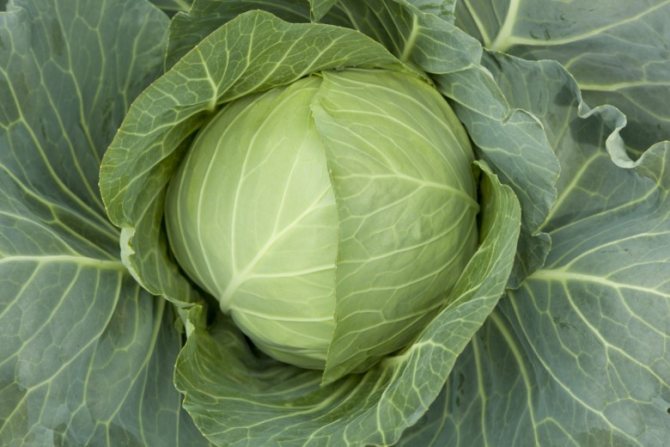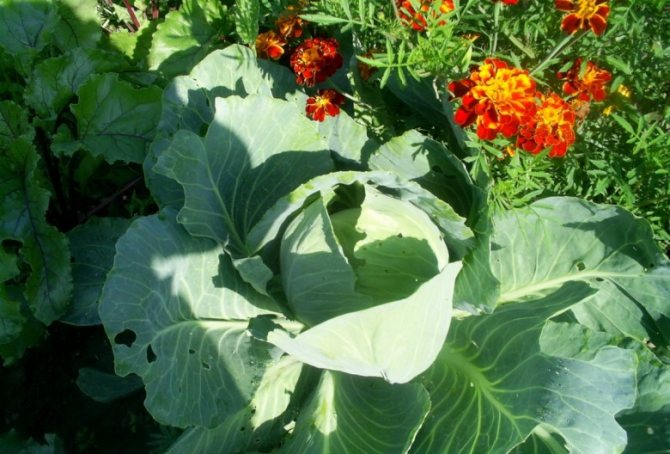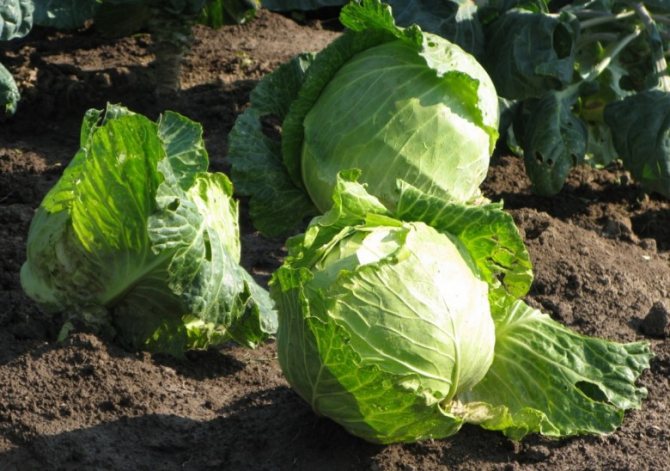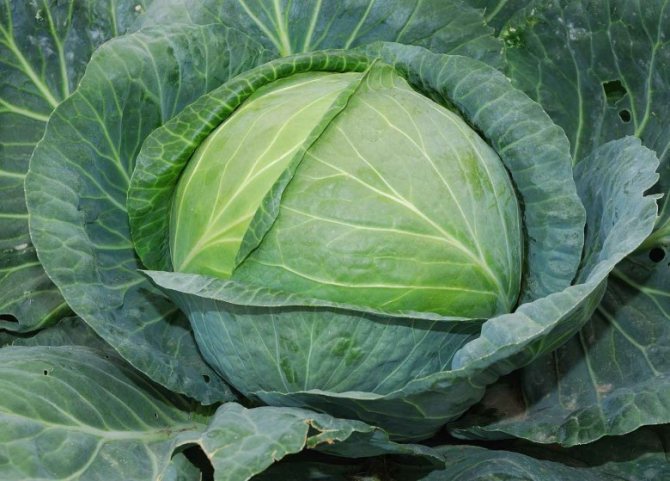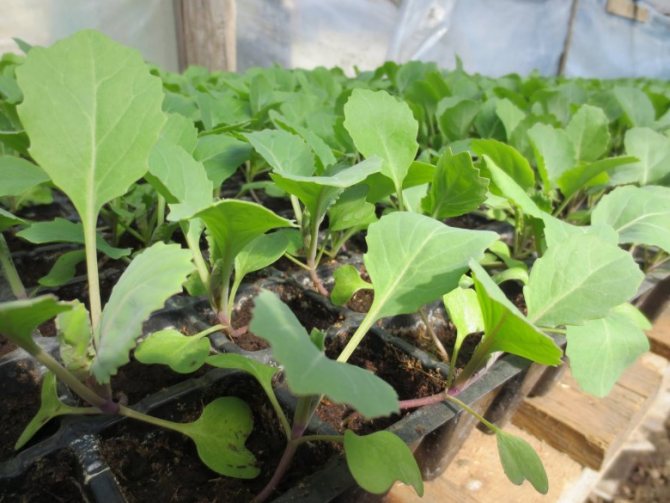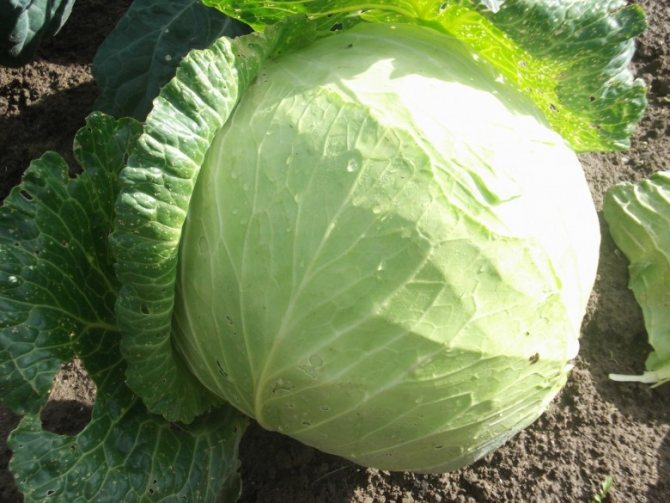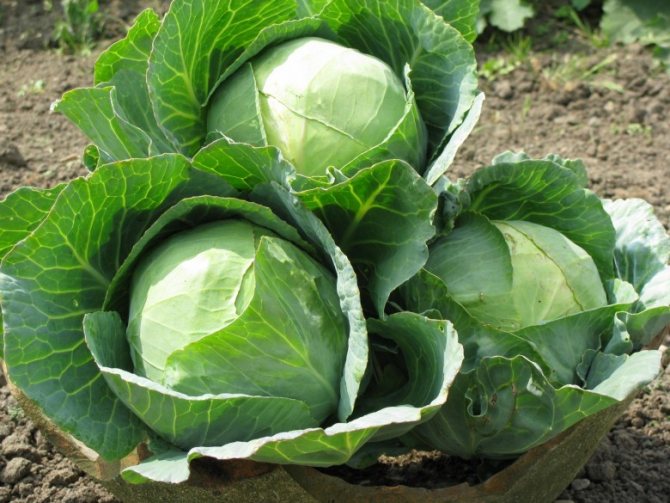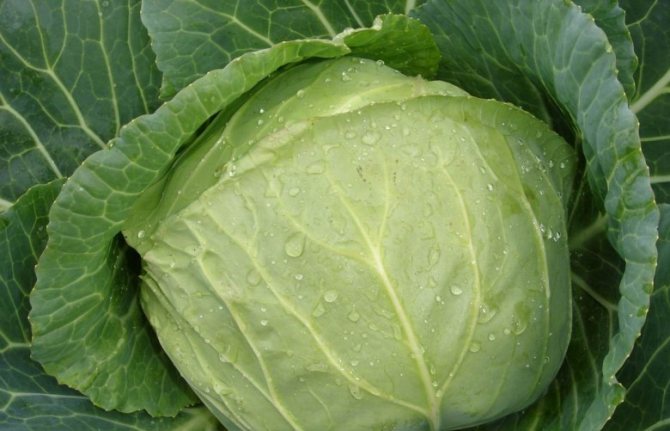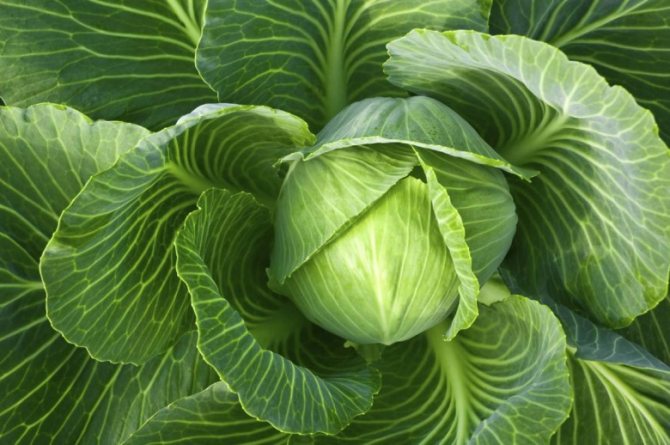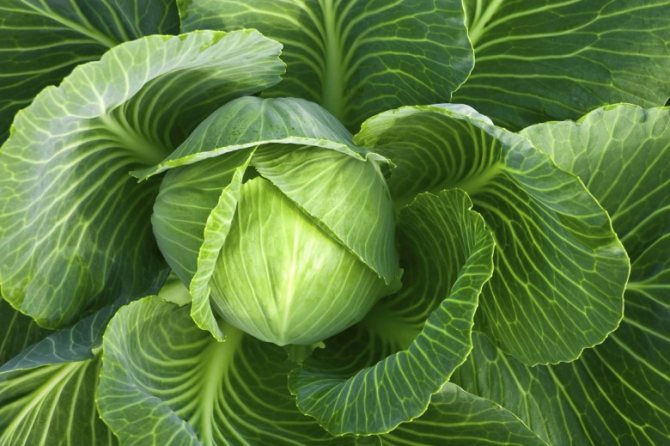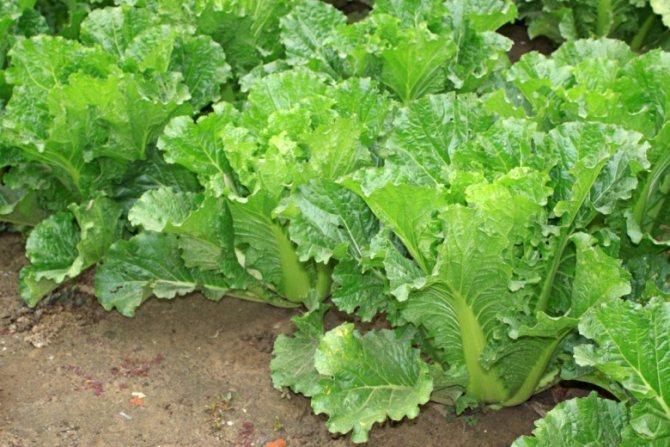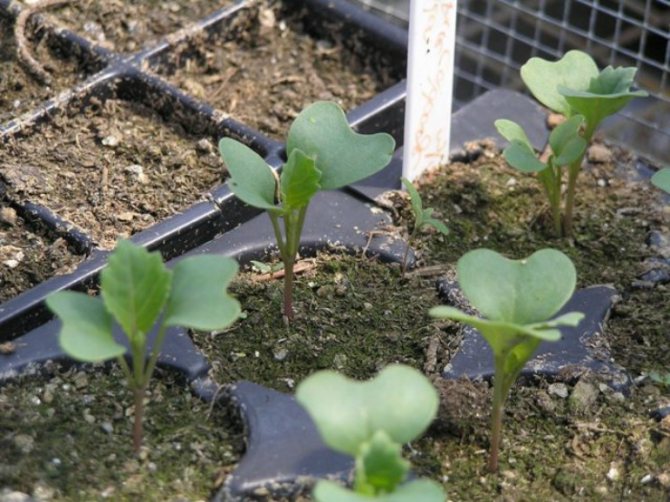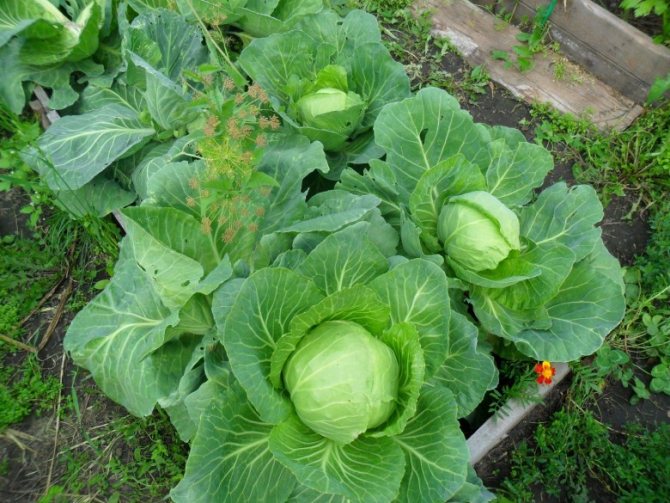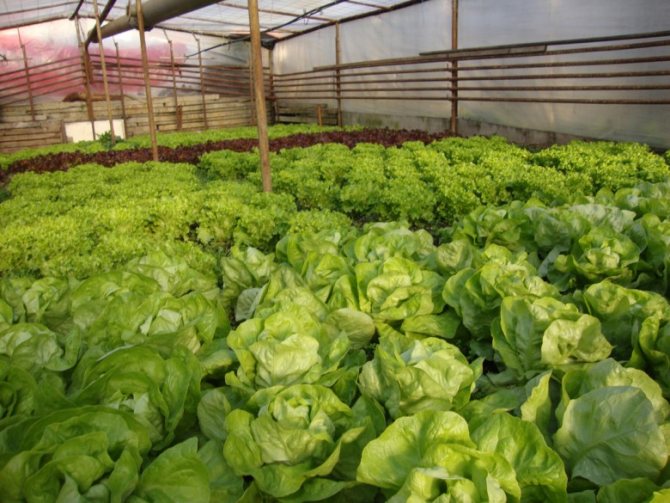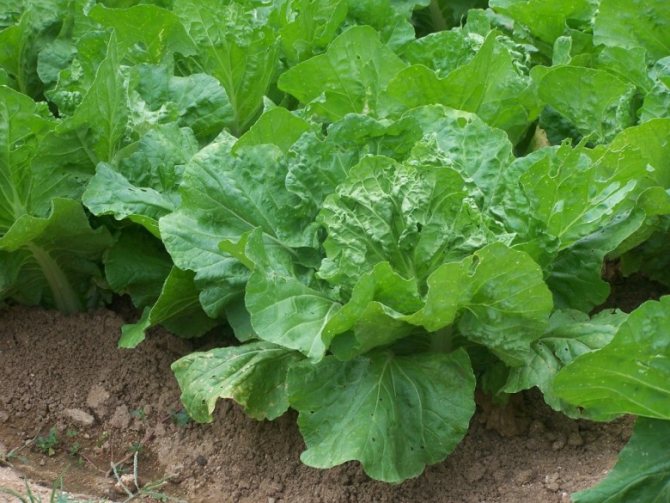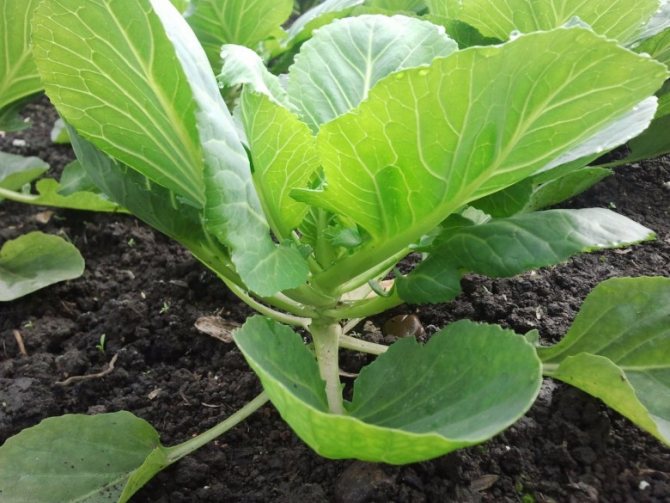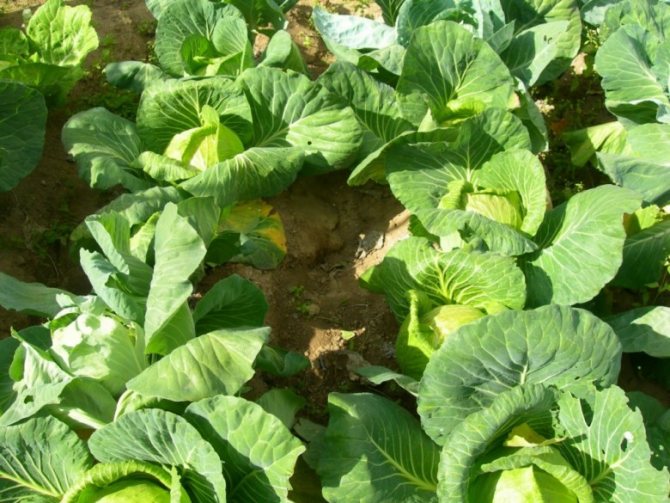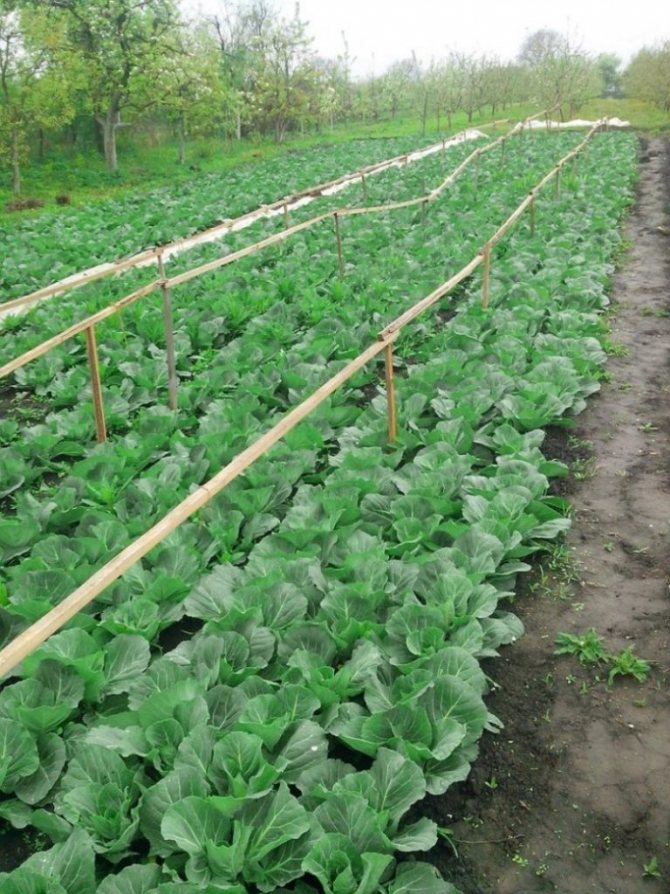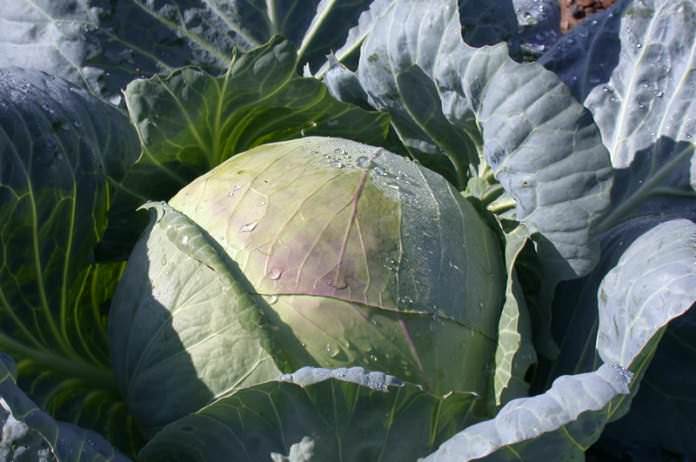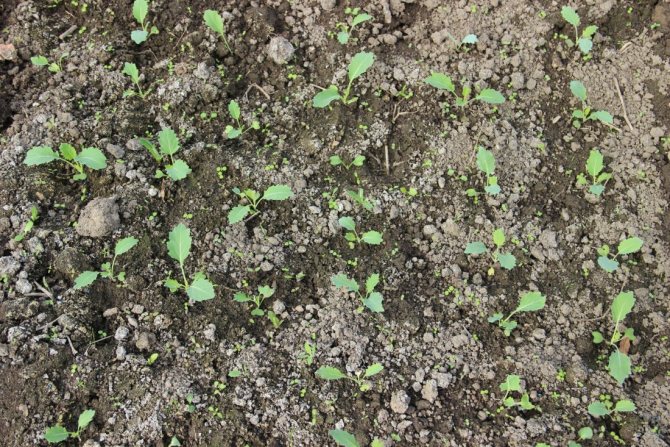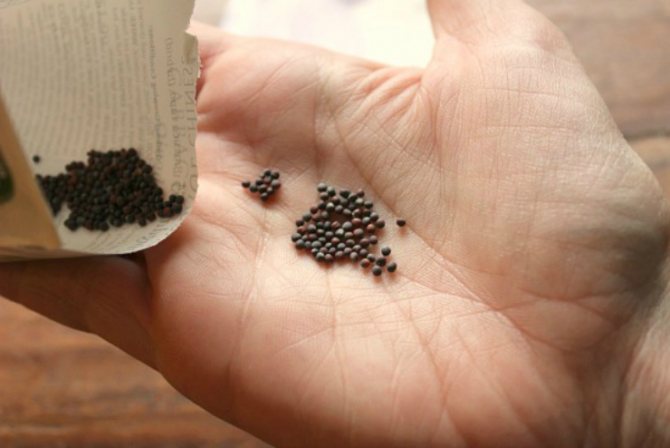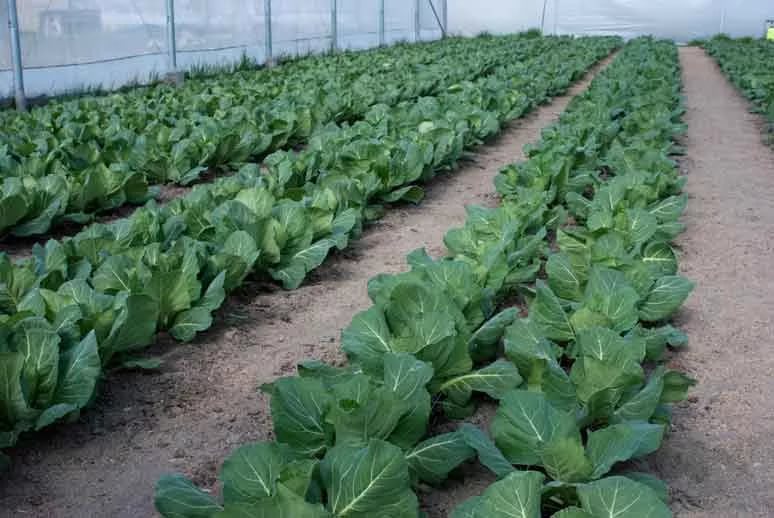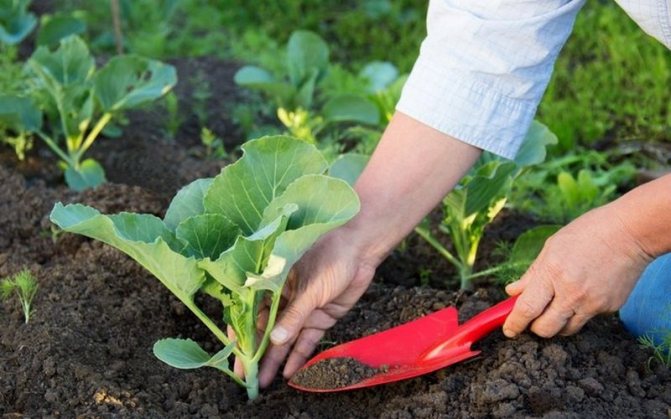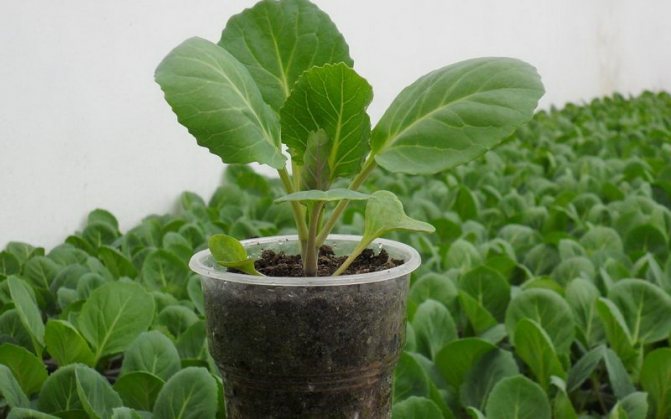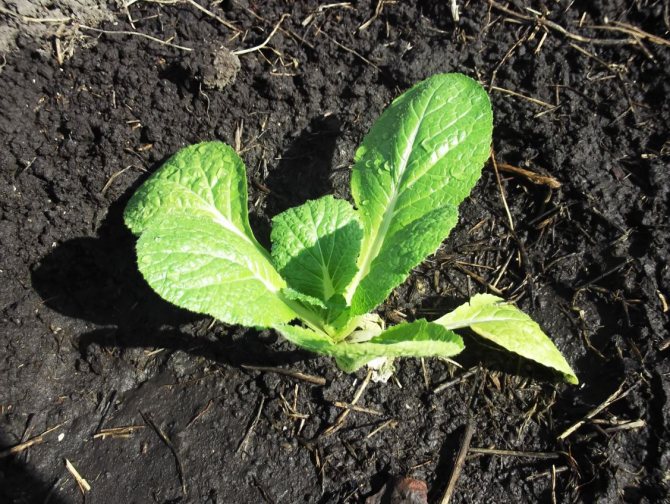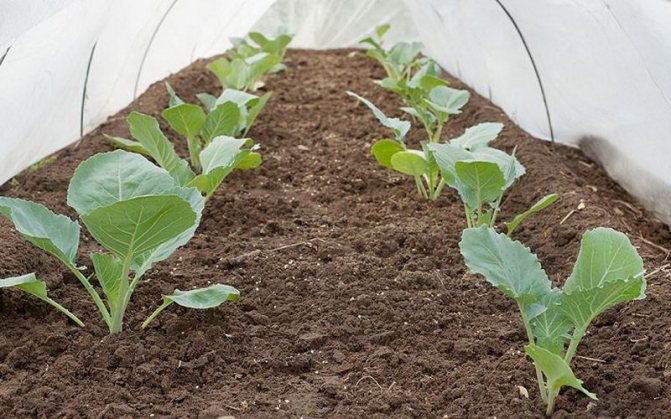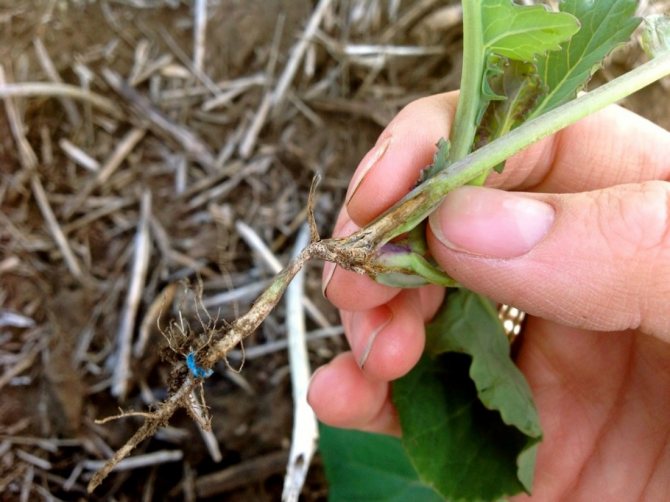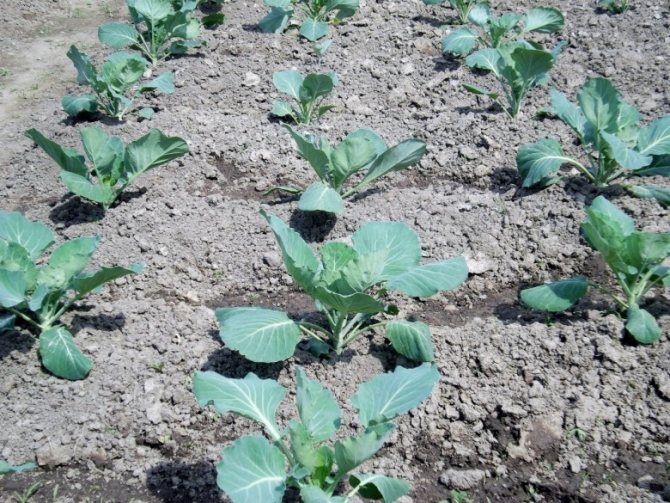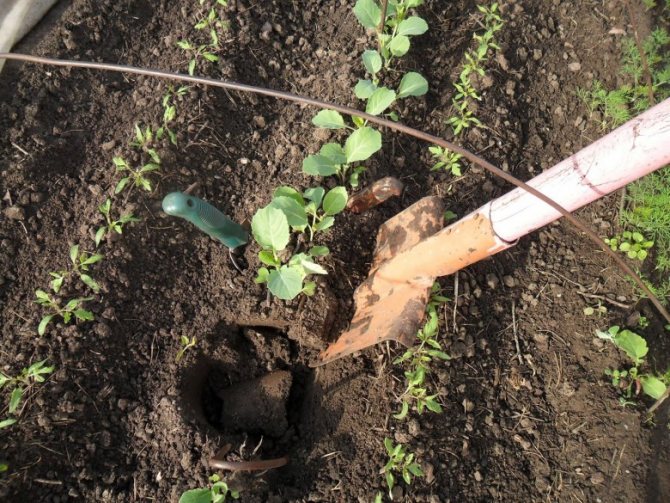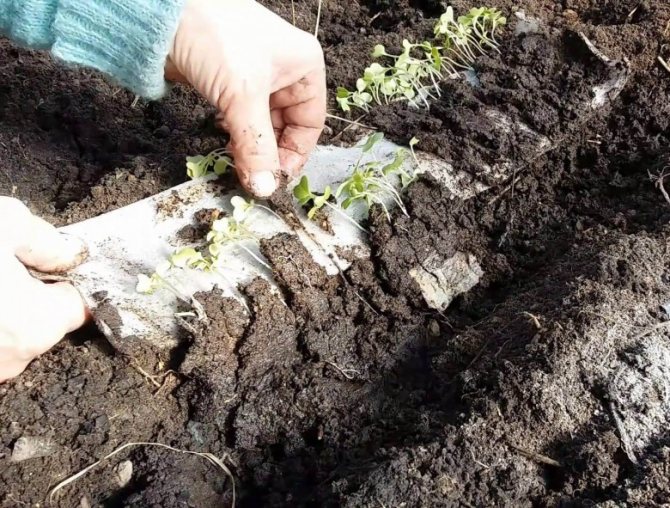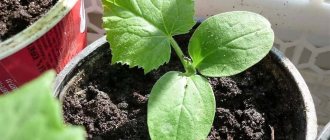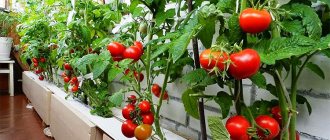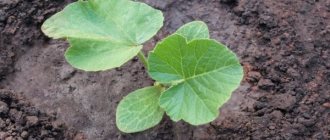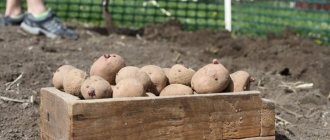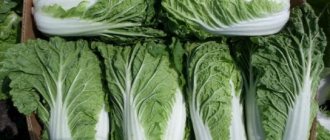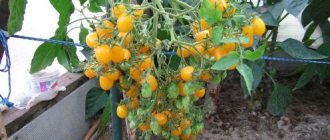Man began to use cabbage in prehistoric times, from the Stone and Bronze Age. Archaeological excavations have shown that the technology of its cultivation was already mastered in Ancient Egypt.
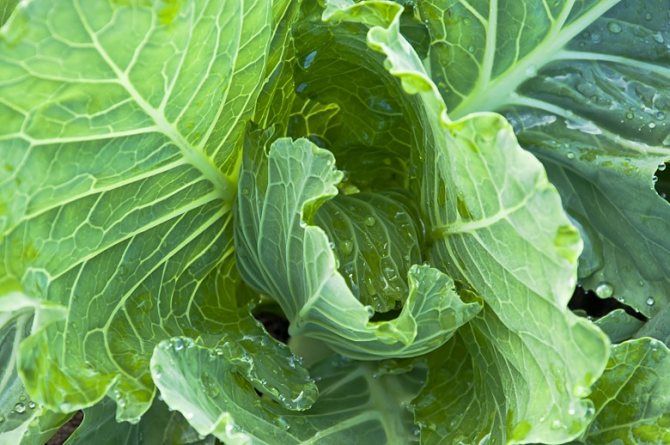
This vegetable is rich in vitamins A, B1, B2, C and macro- and microelements. Contains protein and fiber. According to nutritionists and representatives of traditional medicine, the juice of this plant prevents the development of cancer and heart disease.
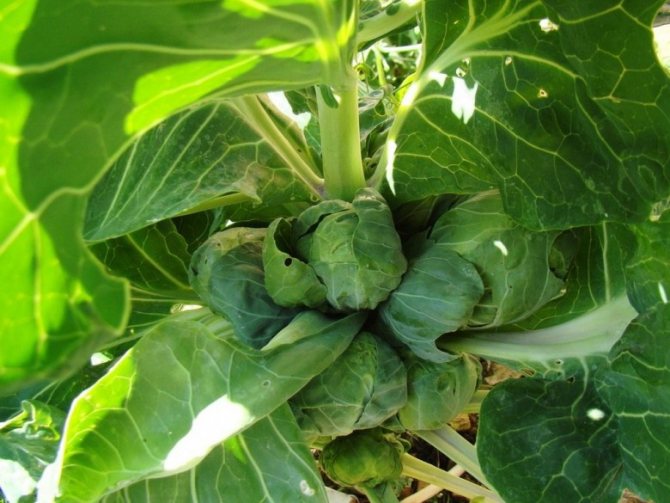

The leaves are used as compresses to treat wounds, colds and headaches.
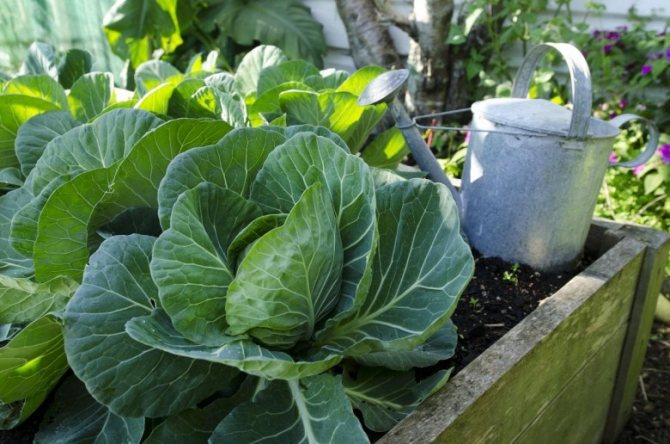

Culinary recipes allow cooking dozens of dishes from cabbage, which is why it has become the favorite of millions of housewives.
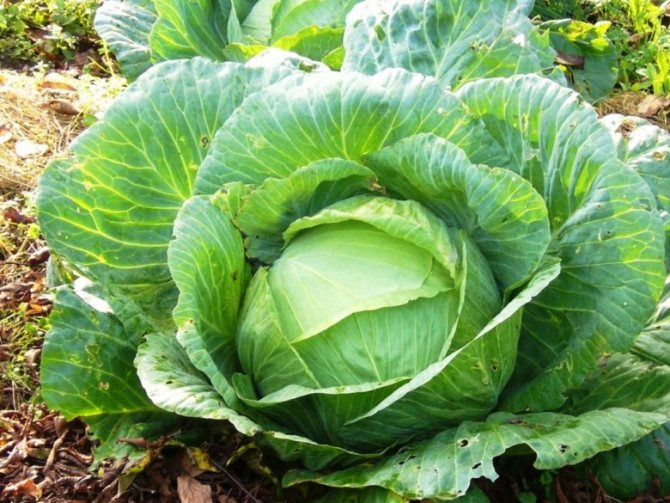

This vegetable is grown in open and closed (greenhouse and greenhouses) ground.
Advantages and disadvantages of growing
pros:
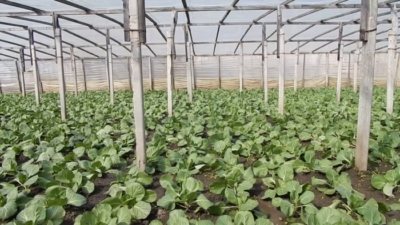

- Faster growth and maturation... Instead of August, the first harvest can be obtained in June or July.
- Full control over the growth of culture... If necessary, you can regulate the temperature inside the greenhouse, and at the same time extend the daylight hours, which will have a positive effect on the growth of heads of cabbage.
- Convenience... At home, in an open area, it is not always possible to provide the desired temperature regime. At the same time, the greenhouse can be arranged anywhere, even at home on the balcony.
- Protection... Cabbage heads are protected from unfavorable manifestations of nature - frost, rain, hail. Also, cabbage has an increased resistance to late blight.
Minuses:
- Microclimate... In the closed room of the greenhouse, its own microclimate is inevitably formed. For a plentiful harvest and healthy cabbage, you will have to monitor it, and, if necessary, adjust it - ventilate, water the soil, treat it with chemicals.
- Human intervention... The construction of a greenhouse itself is already a costly process. In addition, growing crops in greenhouses requires increased attention from the owner - timely watering, shelter from cold or heat, lighting control.
Harvest
Growing seedlings
Peking cabbage is early ripening, and planting it in a greenhouse guarantees a very early ripening. Growing up, it forms a rosette from the leaves, in other words, a loose head of cabbage. After 20-40 days from the moment of emergence of seedlings, it is already possible to harvest.
It is a little more difficult to grow Chinese cabbage in a polycarbonate greenhouse. In order for the heads of cabbage to form, it is required to maintain a low air temperature (at the level of 15 ... 20), that is, the greenhouse or greenhouse will need to be shaded and sprayed with water, otherwise the cabbage will release flowering stems and the fruits will not form.
How to choose a variety?
Despite the fact that almost any variety can take root in a greenhouse, farmers have long identified several types of cabbage most suitable for greenhouse cultivation... Here are the best varieties according to the breeders.
"Ditmarsky"
A head of cabbage has a weight of 1-2 kilograms. The variety is early, ripens within 50-70 days, gives the entire crop in one period of time. The earliest species of all existing. (Weight 1-2 kg. Ripens 40-50 days. Early ripening species).
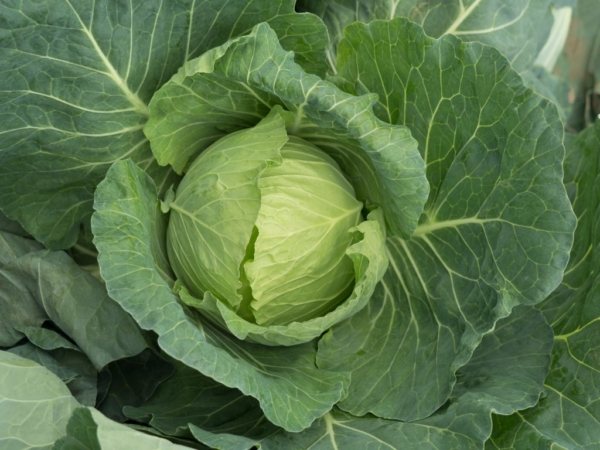

"Number one K-206"
The head of cabbage grows to about the same weight as the "Ditmarsky". Matures in 4 months... The total yield is approximately 40 kg / 10 meters of greenhouse space. (Weight 2 kg.Ripens 120-130 days. The species is mid-season).
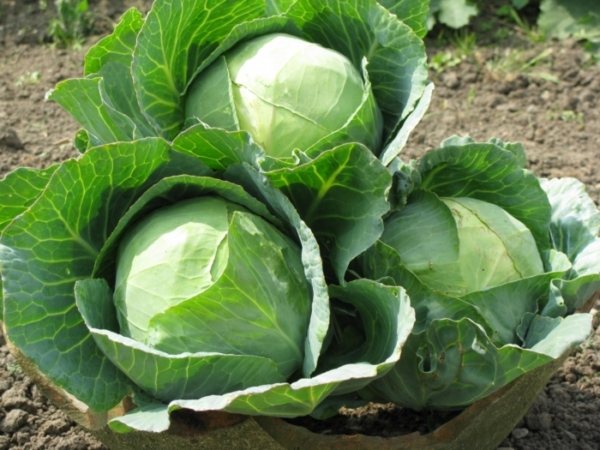

"Golden Hectare 1432"
The latest species, ripens for about 110-140 days. The head of cabbage has good taste, the head of cabbage does not crack. White color. It grows weighing about 2-3 kilograms. Suitable for any culinary dish, from fermentation to hot baking. (Weight 2-3 kg. Ripens 110-140 days. Late appearance).
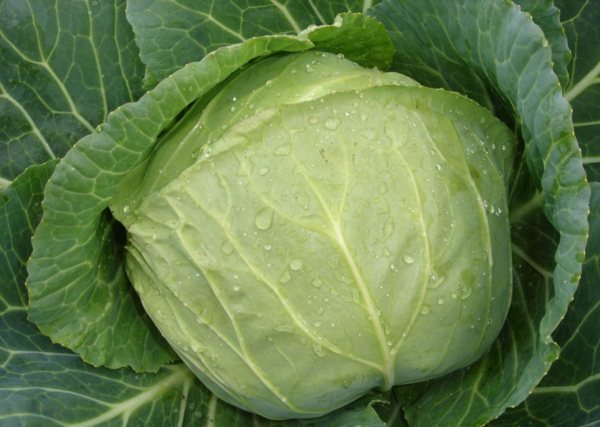

In addition to the three selected varieties, they take root well in the greenhouse:
- Beijing varieties... They are considered early ripening, the first heads of cabbage grow within 45-85 days after seedling. The optimal weight of one head of cabbage is 300-400 grams. It goes well with tomatoes and cucumbers.
- Broccoli... Despite the exotic look, growing the variety is no more difficult than ordinary cabbage. Frost-resistant species.
- Cauliflower... The most capricious type of cabbage, however, is easier to grow in a greenhouse than outdoors. A ripe head of cabbage weighs 400-550 grams.
What kind of greenhouses are there?
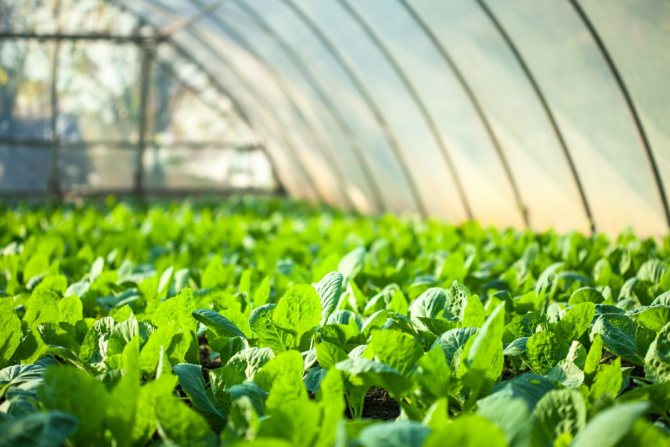

Planting seeds of early cabbage in greenhouses is carried out at the end of February. Later - in March. Basically, greenhouses with biofuel and frame greenhouses are used for early summer cottage sowing. The first is a small pit, on the bottom of which biofuel is placed, sprinkled with earth.
Then the bed is covered with foil. The second option is easier to use. The frames are installed at a height of at least 30 centimeters above the ground and are covered with foil in the same way. You can also grow seedlings in pots on the windowsill and balcony balconies. But at the same time, it is more difficult to create the necessary conditions.
Joint landings
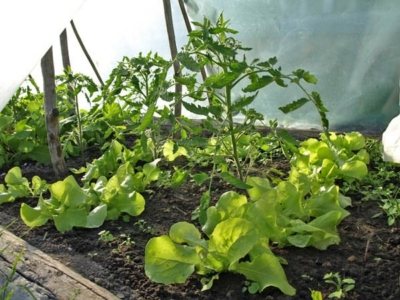

A greenhouse, for all its advantages, has one significant disadvantage - limited space. And therefore, the question of what else to plant together with cabbage, and how this neighborhood will affect the harvest, remains open.
They coexist well with cabbage:
- cucumbers;
- dill;
- salad.
Such a neighborhood is even useful for cabbage - the smells emitted by these crops scare away pests, and the prickly ivy of the cucumber protects from slugs.
The neighborhood with tomatoes is extremely controversial, and there is no single answer to this question. On the one hand, tomato bushes also have a specific smell that repels insects. On the other hand, not all cabbage varieties love tomatoes. And in general, cruciferous vegetables do not coexist well with tomatoes.
Peking cabbage agricultural technology
As with any variety of cabbage, proper care, watering, feeding and processing is important for Peking cabbage. If you follow all the rules of agricultural technology, you can grow a good harvest. For example, since it is compared to lettuce, it should be borne in mind that growing this crop in winter can produce a more succulent plant than lettuce leaves.
This type of cabbage is considered moisture-loving, so it is important to know the basics of proper watering so that it has enough moisture. Abundant watering is needed during the formation of a head of cabbage, and in the early stages it is enough to water it after 4 days.
Step by step instructions: how to plant and how to grow?
Seed preparation
- For seedlings, especially large seeds of a dark color are selected.
- Then they are placed in warm water for 20 minutes, then in cold water for 3 minutes.
- After that, they are dried in napkins or gauze.
- For better germination and high-quality seedlings, you can harden the seeds - hold them for a day at a temperature of 1-2 degrees Celsius.
Attention!
If the seeds are white cabbage, then the seeds can be additionally treated with a nitrophoska solution.
Planting and leaving
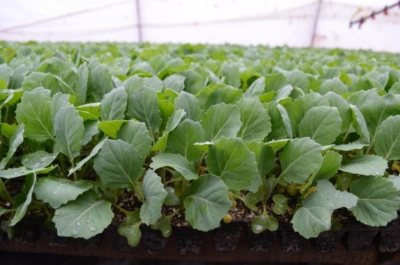

- On the beds, grooves of 3-4 cm are made with a distance of 15 cm between them. Then they are spilled with warm water. The seeds wake up in steps of 2-3 cm, and sprinkle with soil 2 cm thick. Then the beds are covered with a warming cover.
- After a few days, shoots appear, and the shelter is removed for the daytime. After the formation of the first leaflet, the seedlings are watered, thinned out and treated for parasites.After germination of a few more leaves, watering increases, and the soil is filled up.
- The sprouts are fed several times - after the third leaf with superphosphate, potassium and nitrogen fertilizer, right at the root. With further growth, it is fed with nitrogen. Before transplanting, phosphorus, nitrogen and potassium fertilizers are applied to the garden. Fertilizer should not fall on the leaves.
- Daylight hours for cabbage sprouts should last about 10-12 hours. If the sun is low or the day is short, additional lighting is installed.
- Hardening of seedlings occurs in several stages - when the daytime temperature is below 15 degrees, the covering material is removed for 15 minutes a day. Then, after a week already for 25 minutes, and henceforth every week for 10 minutes more. When the night temperature drops to 8 degrees, a small window is left overnight.
AdviceBefore the transfer, under normal weather conditions, the shelter is removed for the whole day.
The soil
The soil is dug up, loosened and, if necessary, fertilized... It is best to feed the kidney with organic fertilizers. 20 grams of potassium and 40 grams of superphosphate will not be superfluous. The acidity of the soil should be neutral. If necessary, the soil is deoxidized with lime.
In the spring, the soil is once again dug up and loosened, for each square meter a bucket of manure is brought in, and one or two glasses of ash.
Sowing
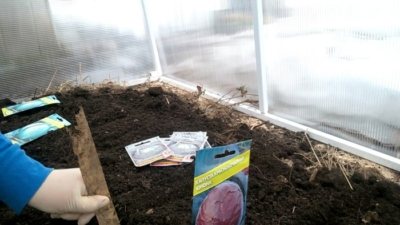

Before planting seeds, the soil in the greenhouse is treated with a 12% solution of hexachlorane. Seeds are planted to a depth of 2-3 cm... Then, after the appearance of 4-5 petals, only the strongest shoots are left in the garden. One sprout needs 40-50 cm of space.
The picking of seedlings occurs, as a rule, in January or before planting in the greenhouse. To do this, you can use cups with a volume of 200-300 ml.
Care
The sprouts need a lot of watering with warm water. (3-4 times a week). There should be plenty of sunlight in the greenhouse. After watering, shallow loosening of the soil is done. The temperature in the greenhouse should be favorable (15-20 degrees Celsius). Watering is stopped a month before harvesting.
Top dressing
- Every 14 days, the sprouts are fed with a solution of bird droppings. Such a top dressing is prepared the day before use (a concentrate is made, and before watering, it is diluted with a bucket of water 10 times).
- A week after transplanting, the seedlings are watered with a bucket of water with three tablespoons of urea added - 1 liter per plant.
- Before tying a head of cabbage, prepare a bucket of water with three tablespoons of nitrophoska - 2 liters per plant.
General information
"Tonus";
Peronosporosis - spots and plaque appear on cabbage.
- When the seedlings are 14 days old, the sprouts can be transplanted into separate containers, for example, with a peat mixture. But this is not necessary - a simple thinning will suffice.
- “Number one - K-206 ″ - the next in earliest maturity. It ripens on day 125, and the approximate weight of the vegetable will be the same as that of the previous variety.
- Planting on ridges and beds is more time consuming. It should be used in low, damp areas where the groundwater is less than 1 m below the surface, as well as in areas with a shallow arable layer.
Mineral fertilizers;
The most difficult thing is to competently grow cabbage seedlings. For this, a special biofuel greenhouse is most suitable, which can be used already from March. And after that, the finished seedlings should be transplanted into the greenhouse.
Experts recommend using biofuel greenhouses, in this case, seedlings can be dealt with from March. Some summer residents arrange homemade steam beds: a pit 30 cm deep is covered with biofuel and a layer of soil, and covered with a film on top.
Peking cabbage is recommended to be harvested either right before consumption, or early in the morning, as it withers quickly
Yield
Peking cabbage is an early maturing and high-yielding plant.Observing agrotechnological requirements, 600–1000 kg of useful vegetables can be harvested from one hundred square meters of greenhouse beds. This figure can be lower when choosing the wrong variety and the wrong care.
Unlike other types of cabbage, the Peking variety matures in only 45-60 days. Thanks to this early maturity in the greenhouse, it is possible to collect 3 harvests of useful vegetables. Especially popular and, accordingly, expensive Peking cabbage in early spring.
Sowing cabbage for seedlings at home, planting it in a greenhouse and in open ground
To be successful when growing cabbage, you must strictly follow the rules. They start with the choice of a variety, after which they prepare the soil, maintaining the technology of processing the planting material. It is necessary to sow seeds in the soil saturated with useful microelements. It is not enough to sow the seeds, but you should take care of the seedlings in order to prevent damage from pests and fungal spores. To do this, spraying with bio- and chemical preparations, folk remedies is carried out on time, each crop is fertilized in order to achieve high yields.
Subject to the primary conditions, it is possible to achieve success in growing cabbage seedlings:
- correct selection of the variety;
- preparation of seeds for sowing;
- qualified preparation of planting soil;
- adhere to exact landing dates;
- care of seedlings and their cultivation.
There are many varieties of garden cabbage. But many people prefer white cabbage, red cabbage and cauliflower are less common. Peking, kohlrabi, broccoli and Brussels sprouts are also planted. Each species has a variety of varieties and hybrids.
Varieties are chosen in accordance with the goals that are pursued when growing a crop. For summer salads, early varieties are suitable, which ripen within 40-50 days after sowing the seeds. These include the Skorospelka variety or ultra-early F1 hybrids: Parel, Start and Express.
For conservation and fresh consumption, medium-late and mid-season varieties and hybrids are suitable, such as Slava, Podarok, Amager, Megaton, Snow White. For fermentation and winter storage, they choose Moscow late, Kolobok, Kharkovskaya winter, Belorusskaya and many others.
The seeds are prepared for sowing as follows:
- 1. Select the most complete, large, with a diameter of at least two centimeters, lower them in a 3% saline solution, select the specimens that have settled to the bottom, rinse with warm clean water and dry slightly.
- 2. For disinfection, the inoculum is placed in a thermos with hot water for 30 minutes, then in cold clean water and slightly dried again.
- 3. You can treat seeds with Phytosporin, having studied the instructions on the package.
- 4. The energy of growth is increased by a solution of microelements. Advise means "Epin" or "Ideal", there are others. An infusion of ordinary wood ash is no less effective.
Brightly colored or coated raw materials cannot be processed, since they are already ready for use.
Land for seedlings should be stored in the fall. Having collected the earth in containers, for example, in buckets, it is left to freeze under a shelter so that rain or melt water does not fall on it. If it was not possible to stock up on soil, then it is possible to prepare it in the spring, but the soil mixture requires a nutritious one, otherwise the seedlings will grow poorly. To do this, take sand or gravel, turf or garden soil, peat, humus in equal parts and mix. It is advised to disinfect the planting base in order to prevent infection of seedlings with diseases and bacteria, fungal formations.
A soil mixture is also prepared from sawdust scalded with boiling water, river sand, compost substrate in a ratio of 1: 1: 2. A little wood ash will not interfere with the growth of plants, but on the contrary, it will improve the composition of the soil with micro and macro elements, which will prevent the appearance of a black leg.
You should not take garden soil from those areas where radish, radish or cabbage grew, that is, crop rotation should be observed. In such soil, causative agents of infections characteristic of cabbage remain. The material is not suitable even after tomatoes.
The addition of agroperlite will loosen the substrate, and when the soil is moistened, it absorbs excess moisture and distributes water between young seedlings. Perlite is added after the calcining and steaming procedure.
Experienced gardeners sift the soil so that earthworms do not get into the seedling pots, since in a confined space they harm germinated crops.
The preparation of the soil also includes treatment against diseases and pests.
Open ground transplant
- A week before the proposed transplant into open ground, all windows and doors are opened in the greenhouse. This is necessary for the seedlings to get used to the fresh air and harden. At the same time, the last feeding is carried out.
- Usually, the transplant is carried out after the seedlings have reached 60-70 days of age.
- Seedlings in the greenhouse are watered. At the same time, holes are prepared in the open-air garden. Wells are also spilled.
- Each plant is carefully removed from the ground with all the roots and transferred to the holes in the garden. The distance between cabbage should be 30-40 cm. Between rows - 50-60 cm.
- Plants should not be buried too deep. The earth should hide the roots until the first leaves.
- Plants are abundantly sprinkled with fly ash.
Preparation of planting material
Peking cabbage seeds collected by hand or those that have not been processed by the manufacturer are soaked in a 1% solution of potassium permanganate for half an hour. Biological preparations "Fitosporin-M", "Baktofit" are also used as a disinfectant liquid for pre-sowing treatment of the planting material of the culture. The solution is prepared in accordance with the attached instructions for the selected product.
Immediately before planting in pots or in a greenhouse, the planting material of Peking cabbage is soaked for 12 hours in a growth stimulator. Popular means - "Epin", "Zircon".
Culture information
Cabbage is a vegetable that represents the Cruciferous family. The culture has been known since ancient times. The plant is biennial. In the first year, it forms a large, strong head of cabbage. The head of cabbage is actually a bud located at the top of the stem. The stem is powerful and durable. Its diameter is about 3-7 cm. It is used for food. A head of cabbage consists of upper and lower leaves. The leaf plates are elastic, large. Depending on the variety, the head (another name for the head) can be from 1 to 8.5 kg.
In the second year, the plant grows a long, thin stem. It is abundantly strewn with branches. The branches have yellow or cream flowers. Cabbage fruits grow in the form of pods, which contain seeds.
Testimonials
Mikhail, Stary Oskol
I deceive my Peking so that it does not shoot. I sow seeds in peat tablets in early April (from 5 to 10). When shoots appear, I close them after 18-00 with cardboard boxes. After transplanting into the greenhouse, I repeat the closing procedure, closing the ridges with black spunbond.
Nadezhda, Leningrad region
The summer was hot, I had to save the cabbage from the flea. Sprinkled it with a vigorous solution of black and red pepper. Liquid soap was added for adhesion. I won't say that the effect was 100%, but most of the flea beetles stuck.
Natalia, Moscow region
Last season I planted a hybrid of Monaco. He showed himself perfectly. There was no shooting, the heads of cabbage were resilient, large, weighing up to 2 kg. Planted in the spring and in the second half of the summer. Both harvests were excellent. The germination rate of the hybrid is 100%.

